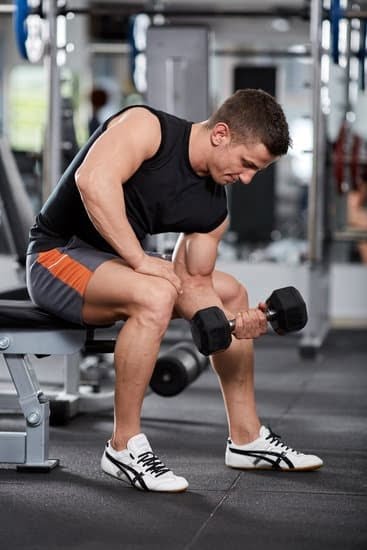Are you looking to learn interesting facts about exercise and fitness? Regular exercise has a multitude of benefits for the body, mind, and emotions. From physical health to mental well-being, maintaining a consistent exercise routine can have a profound impact on overall wellness. In this article, we will explore the various aspects of exercise and fitness, including the physical, mental, and emotional benefits that come with it.
Regular exercise has numerous physical benefits, such as improving cardiovascular health, increasing muscle strength and endurance, and promoting better sleep. On the other hand, it also positively influences mental health by reducing stress levels, boosting mood through the release of endorphins, and enhancing cognitive function. Moreover, maintaining a consistent exercise routine can have a positive impact on emotional well-being by building self-confidence, reducing anxiety and depression symptoms, and providing an overall sense of accomplishment.
Understanding these diverse benefits can help motivate individuals to prioritize regular physical activity in their lives. Whether it’s hitting the gym for weight training or going for a hike outdoors, the physical, mental, and emotional rewards of maintaining an active lifestyle are certainly worth exploring further.
The Science Behind Weight Loss
When it comes to weight loss, exercise plays a crucial role in helping individuals achieve their goals. Regular physical activity not only burns calories but also contributes to the increase of lean muscle mass, which in turn boosts the body’s metabolism. This means that even after finishing a workout, the body continues to burn calories at a higher rate than usual. Understanding the science behind weight loss and exercise can help individuals make informed decisions about their fitness routines.
An important aspect of the science behind weight loss is the role of metabolism in the process. Metabolism refers to the series of chemical processes that occur within the body to maintain life. It is often divided into two categories: anabolism, which involves building up molecules and storing energy, and catabolism, which involves breaking down molecules to release energy.
The rate at which these processes occur determines an individual’s metabolic rate. Exercise can have a significant impact on metabolism by increasing the body’s energy expenditure and promoting fat loss over time.
Here are some interesting facts about exercise and fitness that shed light on its contribution to weight loss:
- High-intensity interval training (HIIT) has been shown to be particularly effective for burning calories during and after a workout due to its intense bursts of activity.
- Building muscle through strength training can help boost metabolism since muscle tissue burns more calories at rest compared to fat tissue.
- The afterburn effect, also known as excess post-exercise oxygen consumption (EPOC), causes the body to continue burning calories following a challenging workout as it works to restore itself back to its pre-exercise state.
Understanding these facts about exercise and fitness can provide valuable insight into how different types of physical activity contribute to weight loss and overall health improvement.
The Evolution of Fitness
Exercise and fitness have been an integral part of human civilization for centuries, with the ancient Greeks and Romans being some of the earliest proponents of physical activity for health and strength. Over time, different cultures around the world developed their own unique exercise practices, from martial arts in Asia to yoga in India. The evolution of fitness has seen a transition from purely functional movements for survival to more structured and intentional forms of exercise for overall well-being.
To understand the history of exercise and fitness, it is important to recognize that physical activity served practical purposes in ancient societies. For example, activities like hunting, gathering, and farming all required significant physical exertion, contributing to the overall fitness levels of individuals within those communities. As civilizations advanced, organized sports and military training became common ways to maintain physical prowess and discipline.
- In ancient Egypt, physical education was a core component of school curriculum
- Martial arts like kung fu and karate originated as forms of combat training before evolving into popular fitness disciplines
- The Olympic Games in ancient Greece marked the importance of athleticism in society
As the understanding of exercise and fitness has evolved over time, it is fascinating to note how diverse cultural practices have influenced modern-day trends in physical activity. From traditional practices like tai chi to contemporary workout styles such as high-intensity interval training (HIIT), the historical roots of fitness continue to shape how people engage with exercise today.
Common Exercise Myths Debunked
Spot Reduction: The Truth Behind the Myth
There is a common belief that targeting specific areas of the body with exercises will result in fat loss in those areas, known as spot reduction. However, research has shown that spot reduction is not effective. When the body burns fat for energy, it does so in a more systemic way, rather than from specific areas. Therefore, focusing on overall weight loss and body fat reduction through a combination of cardiovascular exercise and strength training is the most effective approach.
Myth: Sweating Equals a Good Workout
Many people associate sweating with a successful workout, believing that the more they sweat, the more calories they are burning. While sweating is a natural response to physical exertion and can be an indicator of intense exercise, it is not necessarily correlated with calorie burn or fitness level. Sweating is simply the body’s way of regulating temperature and cooling off during physical activity. It does not directly translate to the effectiveness of a workout.
The Reality About Rest Days
Another myth surrounding exercise is the idea that rest days are counterproductive to achieving fitness goals. In reality, rest days are crucial for allowing the body to recover and repair itself after strenuous workouts. Overtraining without adequate rest can lead to fatigue, injury, and decreased performance. It’s important to listen to your body and incorporate rest days into your exercise routine to promote overall health and well-being.
Overall
The Role of Nutrition in Exercise
Macronutrients
Proper nutrition plays a crucial role in supporting the body’s ability to exercise effectively. This includes a balanced intake of macronutrients, which are the essential nutrients required in large amounts for the body to function properly. Carbohydrates provide energy for physical activity, while protein is essential for muscle repair and growth. Additionally, healthy fats contribute to overall energy levels and support vital bodily functions.
Hydration
In addition to consuming the right balance of macronutrients, staying properly hydrated is also vital for maximizing the benefits of exercise. Water supports various bodily functions, including regulating body temperature, lubricating joints, and aiding in digestion and nutrient absorption. When exercising, individuals need to replenish the fluids lost through sweat in order to maintain peak performance and prevent dehydration.
Recovery Nutrition
After completing a workout, it is important to consume a mix of protein and carbohydrates within 30 minutes to two hours in order to support muscle recovery and replenish glycogen stores. This window of time is when the body is most receptive to absorbing nutrients that aid in repairing muscles and reducing soreness. Including foods high in antioxidants can also help reduce inflammation brought on by intense physical activity.
By paying attention to proper nutrition before, during, and after exercise, individuals can optimize their workouts and overall health. Providing the body with the necessary fuel will not only enhance performance but also promote faster recovery and long-term well-being.
Interesting Fitness Trends
In recent years, the fitness industry has seen a surge in unique and unconventional exercise trends that have captured the interest of fitness enthusiasts. Aerial yoga, for example, combines traditional yoga poses with acrobatic movements, using a fabric hammock or aerial silk as a prop. This form of yoga not only provides a full-body workout but also improves flexibility and balance.
Similarly, obstacle course races have gained popularity as exciting and challenging events that test participants’ strength, agility, and endurance. These races often include various obstacles such as mud pits, rope climbs, and wall jumps, creating a fun and dynamic way to stay active.
One interesting trend that has been on the rise is virtual reality workouts. With the advancement of technology, fitness enthusiasts can now immerse themselves in virtual environments while exercising. This innovative approach not only adds an element of excitement to traditional workouts but also enhances motivation and engagement.
Additionally, wearable fitness trackers have become increasingly popular for monitoring various aspects of health and fitness, including heart rate, sleep patterns, and daily activity levels. These devices provide valuable data that can help individuals track their progress and make informed decisions about their exercise routines.
It’s no surprise that these interesting fitness trends have gained popularity among individuals looking for engaging ways to stay fit and motivated. As the fitness industry continues to evolve, it’s likely that more unique and innovative trends will emerge to cater to the diverse interests and preferences of fitness enthusiasts.
| Interesting Fitness Trends | Benefits |
|---|---|
| Aerial Yoga | Improves flexibility & balance |
| Obstacle Course Races | Tests strength & endurance |
| Virtual Reality Workouts | Enhances motivation & engagement |
| Wearable Fitness Trackers | Monitors health & progress |
Fun Facts About Exercise and the Body
Exercise has numerous interesting effects on the body that go beyond just physical fitness. When we exercise, our bodies release endorphins, which are neurotransmitters that act as natural painkillers and mood elevators. This is why many people experience a ‘runner’s high’ or an overall sense of well-being after engaging in physical activity. Additionally, exercise can help reduce levels of cortisol, the stress hormone, leading to lower levels of anxiety and depression.
Another fascinating aspect of exercise is its impact on brain health. Studies have shown that regular physical activity can improve cognitive function and reduce the risk of developing neurodegenerative diseases such as Alzheimer’s. This is because exercise increases blood flow to the brain and stimulates the growth of new brain cells.
In addition to its mental health benefits, exercise also plays a crucial role in improving flexibility and preventing injury through stretching. Incorporating stretching exercises into your workout routine can increase your flexibility, improve posture, and reduce muscle soreness. Stretching can also help enhance performance in physical activities by allowing a greater range of motion. It is important to note that proper stretching should be done when muscles are warm to avoid injury.
| Effects of Exercise | Impact |
|---|---|
| Release of Endorphins | Natural painkiller and mood elevator |
| Brain Health Benefits | Improves cognitive function and reduces risk of neurodegenerative diseases |
| Flexibility through Stretching | Increases flexibility, improves posture, reduces muscle soreness |
The Future of Exercise
In conclusion, the future of exercise and fitness is an exciting one, filled with endless possibilities for innovations and technological advancements. As we continue to explore the potential of virtual reality workouts and wearable fitness trackers, it is clear that the way we approach physical activity is evolving rapidly. These emerging technologies have the potential to revolutionize the way we engage with exercise, making it more immersive, personalized, and effective.
The integration of virtual reality into workouts opens up a world of opportunities for individuals to experience new and exciting forms of exercise. By creating immersive environments and interactive experiences, virtual reality has the potential to make workouts more engaging and enjoyable, ultimately motivating individuals to be more consistent in their fitness routines.
Similarly, wearable fitness trackers are transforming how people monitor their physical activity and overall health. These devices provide valuable data on things like heart rate, steps taken, and quality of sleep, empowering individuals to make informed decisions about their wellness. With continued advancements in wearable technology, we can expect these devices to become even more sophisticated and integrated with other aspects of our lives.
As we look towards the future of exercise and fitness, it’s clear that there are countless opportunities for growth and development. The combination of cutting-edge technologies with a deeper understanding of human physiology continues to push the boundaries of what is possible in the realm of physical activity.
These trends highlight just a few examples of how exercise and fitness are constantly evolving, presenting us with new ways to improve our health and well-being. It is indeed fascinating to see how these interesting facts about exercise and fitness are shaping the future landscape of physical activity.
Frequently Asked Questions
What Are Some Interesting Facts About Exercise?
Exercise has been shown to improve mood and decrease symptoms of depression and anxiety. Regular physical activity also helps promote better sleep, boosts energy levels, and can enhance the immune system.
What Are 5 Facts About Physical Health?
Physical health encompasses more than just the absence of illness; it includes factors like proper nutrition, regular exercise, adequate sleep, good hygiene practices, and avoiding harmful substances like tobacco and drugs.
What Are the 5 Fitness Facts Benefits?
The benefits of fitness go beyond just physical appearance – regular exercise can also improve cardiovascular health, increase muscle strength and endurance, boost cognitive function, reduce the risk of chronic diseases like diabetes and heart disease, and contribute to overall well-being.

Passionate about providing useful information to anyone with an interest in the field of Personal Training, I strive to pass on to our readers quality information and to answer any questions about Personal Trainers, the work they do and how to become one.





